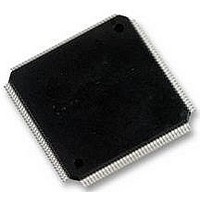LPC2220FBD144 NXP Semiconductors, LPC2220FBD144 Datasheet - Page 15

LPC2220FBD144
Manufacturer Part Number
LPC2220FBD144
Description
IC, 16/32BIT ARM7 MCU, 64K RAM, SMD
Manufacturer
NXP Semiconductors
Datasheet
1.LPC2220FBD144.pdf
(50 pages)
Specifications of LPC2220FBD144
No. Of I/o's
76
Ram Memory Size
64KB
Cpu Speed
75MHz
No. Of Timers
2
No. Of Pwm Channels
6
Digital Ic Case Style
LQFP
Supply Voltage
RoHS Compliant
Core Size
32bit
Oscillator Type
External Only
Controller Family/series
LPC22xx
Peripherals
ADC, RTC
Rohs Compliant
Yes
Available stocks
Company
Part Number
Manufacturer
Quantity
Price
Company:
Part Number:
LPC2220FBD144
Manufacturer:
NXP
Quantity:
5 000
Company:
Part Number:
LPC2220FBD144
Manufacturer:
NXP
Quantity:
530
Part Number:
LPC2220FBD144
Manufacturer:
NXP/恩智浦
Quantity:
20 000
Company:
Part Number:
LPC2220FBD144,551
Manufacturer:
Microchip
Quantity:
150
Company:
Part Number:
LPC2220FBD144,551
Manufacturer:
NXP Semiconductors
Quantity:
10 000
Part Number:
LPC2220FBD144,551
Manufacturer:
NXP/恩智浦
Quantity:
20 000
Company:
Part Number:
LPC2220FBD144/01
Manufacturer:
FSC
Quantity:
30
NXP Semiconductors
6. Functional description
LPC2210_2220_6
Product data sheet
6.1 Architectural overview
6.2 On-chip SRAM
6.3 Memory map
The ARM7TDMI-S is a general purpose 32-bit microprocessor, which offers high
performance and very low power consumption. The ARM architecture is based on RISC
principles, and the instruction set and related decode mechanism are much simpler than
those of microprogrammed CISC. This simplicity results in a high instruction throughput
and impressive real-time interrupt response from a small and cost-effective processor
core.
Pipeline techniques are employed so that all parts of the processing and memory systems
can operate continuously. Typically, while one instruction is being executed, its successor
is being decoded, and a third instruction is being fetched from memory.
The ARM7TDMI-S processor also employs a unique architectural strategy known as
Thumb, which makes it ideally suited to high-volume applications with memory
restrictions, or applications where code density is an issue.
The key idea behind Thumb is that of a super-reduced instruction set. Essentially, the
ARM7TDMI-S processor has two instruction sets:
The Thumb set’s 16-bit instruction length allows it to approach twice the density of
standard ARM code while retaining most of the ARM’s performance advantage over a
traditional 16-bit processor using 16-bit registers. This is possible because Thumb code
operates on the same 32-bit register set as ARM code.
Thumb code is able to provide up to 65 % of the code size of ARM, and 160 % of the
performance of an equivalent ARM processor connected to a 16-bit memory system.
On-chip SRAM may be used for code and/or data storage. The SRAM may be accessed
as 8-bit, 16-bit, and 32-bit. The LPC2210 and LPC2210/01 provide 16 kB of static RAM,
and the LPC2220 provides 64 kB of static RAM.
The LPC2210/2220 memory maps incorporate several distinct regions, as shown in
Figure
In addition, the CPU interrupt vectors may be re-mapped to allow them to reside in either
on-chip bootloader, external memory BANK0 or on-chip static RAM. This is described in
Section 6.20 “System
•
•
The standard 32-bit ARM set.
A 16-bit Thumb set.
4.
Rev. 06 — 11 December 2008
control”.
16/32-bit ARM microcontrollers
LPC2210/2220
© NXP B.V. 2008. All rights reserved.
15 of 50
















